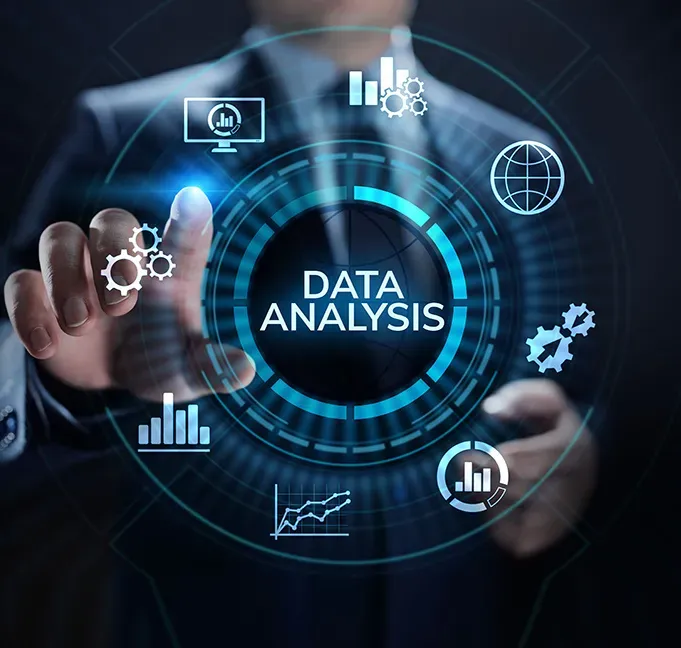Python's popularity in data science is evident in its vast ecosystem of Python modules, libraries, and packages. These supply pre-written code for various applications, making them a handy resource for developers and analysts to save time and effort.
Growth forecasts of the global Python market illustrate its popularity, which is on course to reach USD 100.6 million by 2030, with a 44.8% CAGR.
In this blog, we’ll explore the essential Python libraries for data science that are important for performing tasks such as visualisation, Machine Learning, and data manipulation.
Start your learning journey with advice from our counselor
What is a Python Library?
A Python library is a collection of pre-written Python codes for developers to perform specific tasks.
You can import these libraries into a Python script, allowing you to reuse the code and leverage its functionality in their projects.
Developers create and share their Python modules with others. These Python libraries are also available to download and install from online repositories.
Top Python Libraries for Data Science
Here are some of the top Python libraries for data science that you should consider learning:
Scrapy
Scrapy is one of the most popular in the list of Python modules for writing a Python crawler to collect website information. It's an excellent tool for scraping data needed in Python machine-learning models.
The most common application of Scrapy is identifying the content trends on web pages using URL and XPath patterns.
Scrapy can assist you in extracting the necessary information and organizing it in a data structure.
Know More About Our Online Programs
BeautifulSoup
BeautifulSoup is a popular library used for web crawling and data scraping. If you need to extract data from websites that don't offer CSV or API options, BeautifulSoup can scrape and organize it into the desired format.
It is ideal for smaller-scale problems or one-time jobs, unlike Scrapy, which requires developing your spider and running it through the command line. You can import and use functions in-line using BeautifulSoup.
Selenium
Data Scientists can obtain intriguing data following engagements with web pages via Selenium.
For instance, you may need to create an account, log in, and retrieve the content after clicking some buttons and URLs defined as JavaScript functions.
But, Selenium will be slower than standard scraping libraries. This is because it launches a web browser, such as Chrome, and then mimics all the operations indicated in the code.
Pandas
Pandas is a data manipulation package with structures and operations for practical data analysis. Pandas is a great option when dealing with structured data, such as that found in databases, CSV files, and Excel spreadsheets.
Data Scientists can clean, convert, and manage massive datasets with Pandas.
Pandas' major data structures are Series and DataFrame.
- A Series is a one-dimensional labelled array that can hold any form of data.
- A Data Frame is a two-dimensional labelled data structure containing columns of varied types.
Pandas also has robust data manipulation tools such as jointing, sorting, grouping, filtering, and merging.
NumPy
NumPy is a numerical computing Python package. It supports massive, multidimensional arrays and matrices while offering various mathematical operations for manipulating them.
NumPy is a must-have library for data scientists who perform massive arithmetic computations.
The fundamental feature of NumPy is its array (n-dimensional array) object, which is a quick and effective array for executing arithmetic operations.
NumPy has several array manipulation functions, such as indexing, slicing, and reshaping.
Spacy
Spacy is a popular Python NLP (Natural Language Processing) package with several built-in capabilities, such as a part-of-speech detector and tokeniser.
While Spacy may not be as popular as other libraries specializing in quantitative and structured data, such as NumPy and Pandas, it is still a widely used Python library.
These features make it a good alternative for extracting essential data from text-based sources.
TensorFlow
TensorFlow is an open-source machine-learning library maintained by Google.
TensorFlow offers a range of tools to create and develop deep neural networks, making it adaptable to the needs of data scientists for building custom models optimized for specific use cases.
TensorFlow comes with several high-level APIs that ease the development of deep learning models, including Keras, which offers an interface for building and training models.
TensorFlow also provides various model evaluation tools, such as efficiency and precision scores. TensorFlow is an essential library for professionals working on deep learning tasks.
Keras
Keras is an adaptable library with Python packages like Theano or TensorFlow. Keras constructs models by combining layers, forming a graph-like structure.
Keras eases the process of creating and training models. It integrates with TensorFlow-specific methods such as Estimators and eager execution. TensorFlow becomes more accessible and versatile while maintaining its efficiency.
Scikit-learn
Scikit-learn is a well-known Python machine-learning framework that provides many resources for model selection, evaluation, and data preprocessing.
Scikit-learn includes well-known machine learning methods, including decision trees, linear regression and logistic regression.
Scikit-learn is notable for its ease of use and offers a variety of functionalities for evaluation and model training.
Furthermore, it provides tools for data preprocessing, such as scaling and normalisation. Scikit-learn is an essential library for data scientists who work on machine-learning projects.
PyTorch
PyTorch is an open-source deep learning framework built by Facebook's AI Research group. Its primary application is in deploying robust neural networks and cutting-edge research concepts for industry and academics.
Unlike scikit-learn, PyTorch is for expert users with deep neural network knowledge.
PyTorch is a fantastic choice for developing a production-ready machine-learning model that is quick, efficient, scalable, and can operate in a distributed setting.
Also Read:- How Data Analytics is Revolutionising Decision-Making in Business
Matplotlib
This Python library helps create data visualizations such as graphs and two-dimensional diagrams.
Matplotlib is one of the many plotting tools that benefit data science projects since it provides an object-oriented API for embedding charts into programs.
This package enables Python to use scientific tools such as MatLab and Mathematica. But, programmers must write more code than usual to build complex visualizations. It is worth noting that you can share charting libraries with Matplotlib.
Seaborn
Seaborn is a handy Python machine-learning application for displaying statistical models.
Using this library, you can access an extensive collection of visualizations (including intricate ones such as time series, joint, and violin plots).
SciPy
SciPy is a core library for scientific computing. It's based on NumPy and takes advantage of several of that library's features.
You can use SciPy to execute scientific programming tasks, including calculus, statistical computations, linear algebra, and numerical integration.
Plotly
Plotly is a visualization library that is both free and open-source, making it a favorite among developers. The library is well-regarded for its immersive, high-quality, and publication-ready charts.
Developers can create charts such as boxplots, heatmaps, and bubble charts using Plotly.
It is built on top of the D3.js, HTML, and CSS visualization toolkit, making it one of the top data visualization tools available.
Are you ready to take the next step in your career?
Conclusion
Data science is evolving, and keeping up with the latest tools and techniques is essential for staying ahead.
Python libraries provide a range of functionalities, including deep learning, data manipulation, and machine learning, making them an essential part of the field.
With these powerful Python packages, Data Scientists can work, make better predictions, and gain deeper insights into their data.
If you want to gain in-depth knowledge about data science, consider exploring the various online courses offered by Amity University Online.



